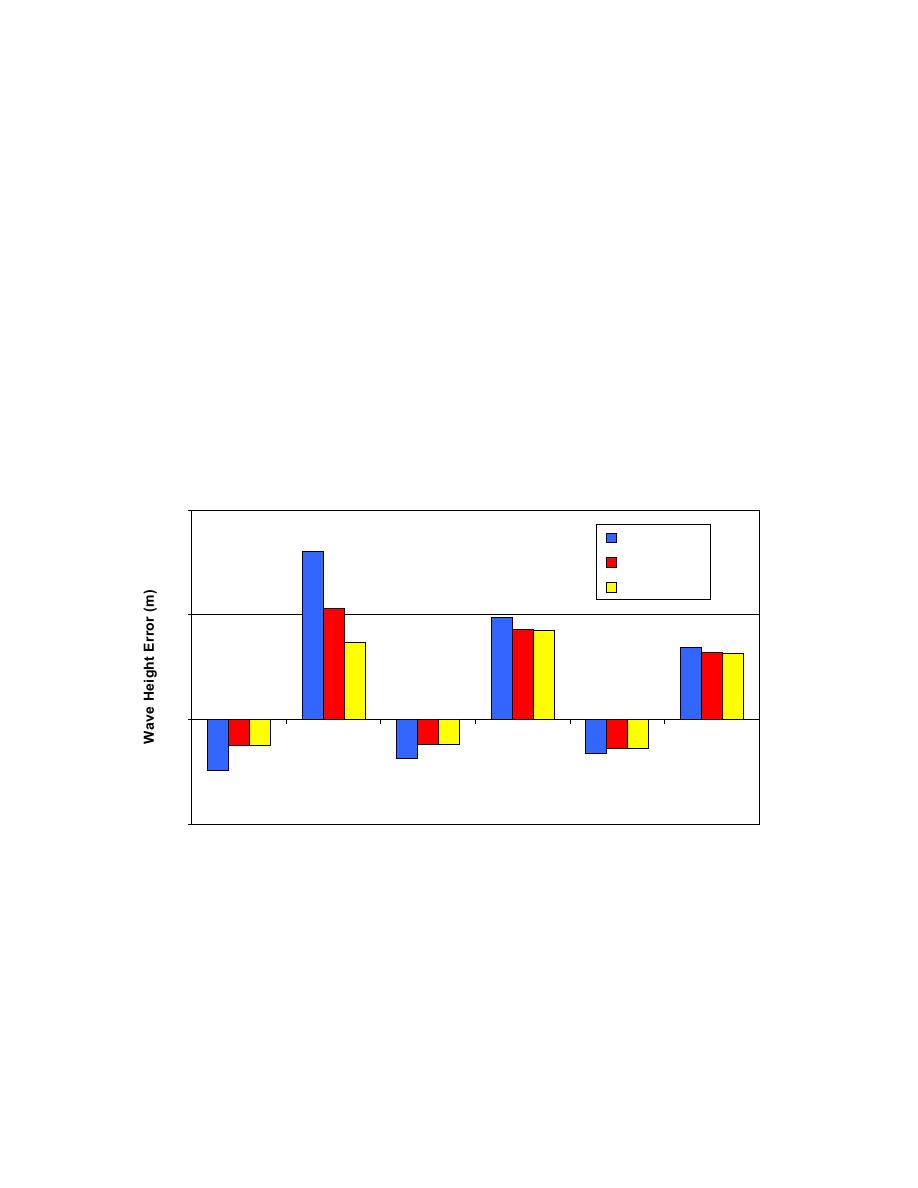
ERDC/CHL CHETN-I-66
June 2002
Figures 7 and 8 show the bias and root-mean-square (RMS) errors for the wave heights and mean
directions, respectively, for the region shoreward of the crest of the shoal and seaward of the surf
zone for all shoal configurations and all 24 wave conditions. The errors are calculated for the
common grid cells (all three grids) outside the surf zone (because wave heights in the surf zone are
purely depth limited, error statistics in that region are not considered). For the large shoal, the
morphic interpolation reduces the RMS error and bias by half in comparison to coarse grid results.
For the medium and small grids, the extent of the influence of the shoal is significantly reduced, so
the overall error is also smaller (although the local error behind the shoal is greater). As the coarse
grid resolves less and less of the shoal (seven cells for the large shoal, three cells for the medium
shoal, and one cell for the small shoal), the inaccuracies of the input from the coarse grid to the
nested grids cause the error for the coarse and nested grids to be similar. The conclusion from these
examples is that the morphic interpolation is most accurate and should be used for simulations with a
single wave train. Linear interpolation provides comparable accuracy and is appropriate for complex
spectral shapes. Nesting is best applied offshore of complex features, such as the elliptic shoal used
in this example, but provides reasonable results even for the boundary condition on the shoal.
Features that are on the order of the coarse grid spacing or smaller, such as the small shoal, cannot be
well represented through grid nesting. To include these features, the coarse grid must have higher
resolution or the fine grid must extend seaward of the feature.
0.2
Coarse Grid
Linear
Morphic
0.1
0
Bias (large shoal) RMS Error (large Bias (med shoal) RMS Error (med Bias (small shoal) RMS Error (small
shoal)
shoal)
shoal)
-0.1
Figure 7. Wave height error for coarse grid and with nesting using linear and morphic interpolation
INPUT AND OUTPUT FOR STWAVE VERSION 4: STWAVE Version 4.0 includes the
capability to nest grids as discussed in this technical note. Implementation of grid nesting requires
changes to the STWAVE model parameter (options) and simulation files. The changes to the
options file make the new version of STWAVE incompatible with older input options files, but the
old files can be updated to the new version with the addition of parameter IBND, as described in the
following paragraphs. The format for the NEST file is also given.
6



 Previous Page
Previous Page
